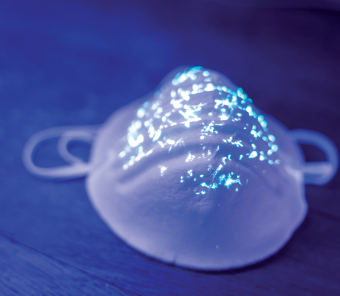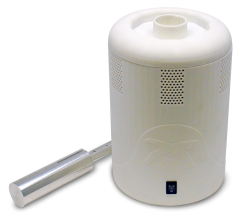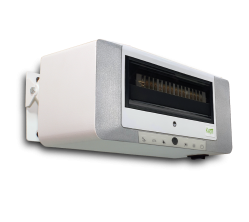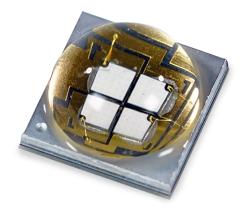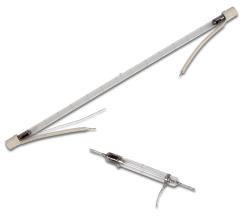Im Gesundheitswesen erworbene Infektionen (HAI): Schutz der Patientengesundheit durch UVC-Technologie

Im Gesundheitswesen erworbene Infektionen (HAI) stellen weltweit eine sehr ernste und wachsende Bedrohung für die Patientensicherheit dar. HAIs, die von den schwerwiegendsten antibiotikaresistenten Bakterien abstammen, können gravierend sein und zu verlängerten Krankenhausaufenthalten, erhöhten Gesundheitskosten und sogar zum Tod führen. Allein in den Vereinigten Staaten sind jährlich zwei Millionen Patienten von Krankenhausinfektionen betroffen, was zu über 100.000 Todesfällen führt und direkte und indirekte medizinische Kosten von schätzungsweise weit über 96 Milliarden USD jährlich verursacht. In 35 kamen die U.S. Centers for Disease Control and Prevention (CDC) zu dem Schluss, dass die Inzidenz von HAI-verursachenden Erregern um bis zu 35 % gesenkt werden könnte, indem einfach UVC-emittierende Geräte in die Standardreinigungsstrategien aufgenommen werden. Glücklicherweise ist die UVC-Bestrahlung eines der leistungsstärksten, wirksamsten und anpassungsfähigsten Werkzeuge zur Unterstützung der Bekämpfung und Eindämmung von Krankheitserregern. UVC-Licht hat eine kurze Wellenlänge und eine hohe Energie, wodurch es eine Vielzahl von Krankheitserregern abtöten kann, einschließlich derer, die mit HAI in Verbindung gebracht werden.
Excelitas bietet eine breite Palette von UVC-Technologien an, die eine entscheidende Rolle bei der Kontrolle und Eindämmung von Krankheitserregern spielen, die mit im Gesundheitswesen erworbenen Infektionen in Verbindung gebracht werden.
Excelitas kann auf eine felderprobte Geschichte der Lieferung gepulster Xenon-Lichtquellen für Desinfektionsanwendungen zurückblicken. Unsere gepulsten Xenon-UV-Lichtquellen erzeugen eine hochintensive, breit-spektrale Verteilung über das keimtötende Band, um schädliche Krankheitserreger effektiv zu eliminieren. Zudem haben neuere Studien gezeigt, dass bestimmte Kombinationen von UVC-Quellen (z. B. LED-Systeme zusammen mit Excimer-Lampen) einen synergistischen Effekt auf die Desinfektion haben, da die Deaktivierungsmechanismen leicht unterschiedlich sind. LEDs bieten viele überzeugende Vorteile für die Reduzierung von Krankheitserregern im Gesundheitswesen. Unsere UVC-LED-Lösungen bieten die größte Flexibilität und den höchsten Integrationsgrad unter den UVC-Lichtquellen.
Darüber hinaus haben sich Excimer-Quellen in letzter Zeit als wertvolles UVC-Instrument zur Reduzierung von HAI erwiesen. Excelitas bietet Excimer-Lampen sowohl in linearen als auch in Modulformaten an, die schmalbandiges 222 nm UV-Licht erzeugen – eine Wellenlänge, die sich als wirksam bei der Bekämpfung einer Vielzahl von Mikroben mit langer Lebensdauer erwiesen hat. Diese Excimer-Lampen eignen sich für den Einsatz in eigenständigen Systemen oder können in multimodale Desinfektionslösungen integriert werden.
Für die Luftqualität in Innenräumen bietet unser Excelitas LED-basiertes Kepri™ Oberluft-Desinfektionssystem eine sichere, effektive Echtzeit-Desinfektion der Raumluft im oberen Bereich, unabhängig von der Raumbelegung. Die UVC-Energie ist gegen eine breite Palette von Krankheitserregern wirksam, darunter Bakterien und Viren, die beispielsweise COVID-19 verursachen. Dieses elegante, kompakte Oberluft-Entkeimungssystem nutzt ein austauschbares UVC-LED-Array zur Desinfektion kontaminierter Luft, die durch Konvektion in den Räumen aufsteigt. Da Sicherheit bei der UVC-Desinfektion von entscheidender Bedeutung ist, setzt Excelitas mit einem dreistufigen Sensorüberwachungssystem den Branchenstandard, um einen sicheren Betrieb selbst in voll besetzten Räumen zu gewährleisten. Sehen Sie sich unser neuestes Video an, in dem gezeigt wird, wie das Kepri UVC-Oberluft-Desinfektionssystem einen Raum sicher desinfiziert. Video hier ansehen.
Das Leistungsspektrum von Excelitas bietet Systementwicklern und OEMs, die Desinfektionsprodukte der nächsten Generation entwickeln, einen deutlichen Vorteil. Unsere fortschrittlichen UVC-LED-Lösungen, unsere leistungsstarken gepulsten Xenon-Produkte und unsere neuen Excimer-Lampen bilden ein vielseitiges und leistungsfähiges Instrumentarium für Systemtechniker und Infektionskontrollmanager im Gesundheitswesen, das zum Schutz der Gesundheit aller Patienten beiträgt.
